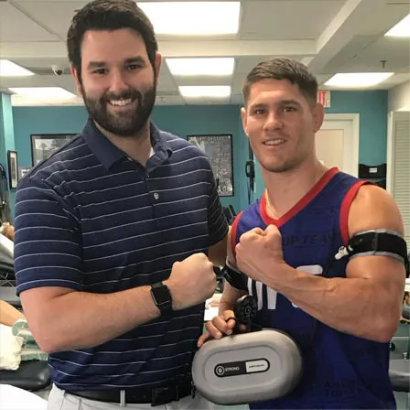Abstract
Ischemic preconditioning attenuates the reduction in brachial artery endothelial function following an ischemia-reperfusion injury. Brief bouts of systemic hypoxemia could similarly mitigate the blunted vasodilatory response induced by an ischemia-reperfusion injury.
The aim of the present study was to determine whether an acute bout of intermittent hypoxia protects against an ischemia-reperfusion injury in young healthy individuals. Brachial artery endothelial function was assessed by flow-mediated dilation in 16 young healthy individuals before and after a 20-min upper arm blood flow occlusion to induce ischemia-reperfusion injury. Blood flow occlusion was preceded by either intermittent hypoxia or intermittent normoxia. Intermittent hypoxia consisted of three 4-min hypoxic cycles at an arterial oxygen saturation of 87 ± 3% separated by 4-min normoxic cycles. Intermittent hypoxia resulted in a lower arterial oxygen saturation than intermittent normoxia (hypoxia: 87 ± 3% vs. normoxia: 99 ± 1%, P < 0.01), which was equivalent to a lower fraction of inspired oxygen (hypoxia: 0.123 ± 0.013 and normoxia: 0.210 ± 0.003, P < 0.01).
When preceded by intermittent normoxia, blood flow occlusion resulted in a blunted flow-mediated dilation. In contrast, the reduction in flow-mediated dilation following blood flow occlusion was attenuated by prior exposure to intermittent hypoxia (hypoxia: 6.4 ± 1.9 to 4.4 ± 2.3% and normoxia: 7.1 ± 2.5 to 4.0 ± 2.4%, time × condition interaction P = 0.048). Exposure to intermittent hypoxia did not affect mean arterial pressure (hypoxia: 92 ± 9 mmHg and normoxia: 89 ± 8 mmHg, P = 0.19) or cardiac output (hypoxia: 5.8 ± 1.1 L·min-1 and normoxia: 5.3 ± 1.1 L·min-1, P = 0.29). In conclusion, hypoxic preconditioning attenuates the reduction in flow-mediated dilation induced by blood flow occlusion in young healthy individuals. Intermittent hypoxia represents a potential strategy to mitigate the effect of ischemia-reperfusion injury associated with ischemic events.
NEW & NOTEWORTHY
Ischemia-reperfusion injury induced by restoration of blood flow following occlusion impairs flow-mediated dilation, a marker of endothelium-dependent vasodilation. In young healthy adults, exposure to intermittent hypoxia, consisting of alternating short bouts of breathing hypoxic and normoxic air, before an ischemia-reperfusion injury significantly attenuated the reduction in flow-mediated dilation. Thus, hypoxic preconditioning represents a potential strategy to mitigate the effect of ischemia-reperfusion injury associated with ischemic events.
See the full study here:
Hypoxic preconditioning attenuates ischemia-reperfusion injury in young healthy adults.
















